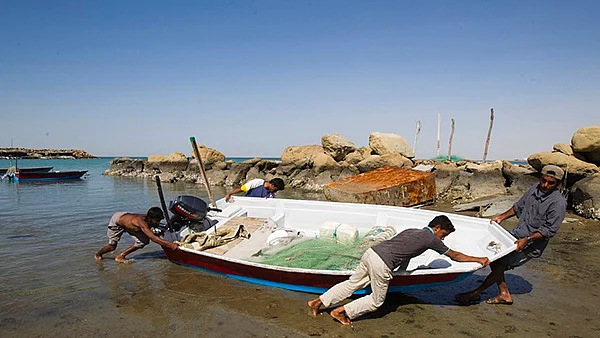On May 6, 2015, Indian transport minister Nitin Gadkari signed an important memorandum of understanding (MoU) with his Iranian counterpart Dr Abbas Ahmad Akhoundi in Tehran for expediting the development of Chabahar.
Located on the south eastern tip of Iran’s troubled Sistan Baluchistan province, in the Gulf of Oman, Chabahar provides Iran access to the Indian Ocean. Its Shahid Kelantry port, with four jetties, has been operational since 1983 but it has capacity to take in only small ships. Its 71,070 inhabitants (as per 2006 census) are predominantly Sunni Baloch and it lies only 72 nautical miles (75 kms) west of Pakistan’s Gwadar port.
Full Steam Ahead
India’s alacrity to go full steam ahead with this project, despite cautionary admonition from the US on the need to wait for withdrawal of economic sanctions against Iran, has been likened by political observers as “Eurasia’s new Great Game”, opening up Sino–Indian rivalry, as Gwadar is now to be majorly developed with China’s assistance.
Under Phase I of this project, India will lease two berths at Chabahar port for 10 years, develop and expand the jetty length there up to 600 metres and dredge depth of berths, increasing capacity to receive four vessels of 25,000 tonnage.
It plans to build container and cargo terminals, setting up a special purpose vehicle (SPV) joint venture, associating either or both Jawahar Lal Nehru Port Trust and Kandla Port Trust with Iran’s Port and Maritime organisation. Investing $85.21 million in this phase, India’s long term expectation would be to gain access for its navy there.
The Rail-Port Link
India plans to help Iranian railways connect Chabahar via Milak to Zaranj, on the Afghanistan border and thence on to Hajigak, in Bamyan where Steel Authority of India has won a contract to explore iron ore from the Hajigak mines. This line could be connected, in time, to Iran’s central and better developed Trans-Iranian network in the north, through the Kerman–Zahedan link.
Work has been completed on the 213 km Delaram Zaranj road, linking it to Afghanistan’s main circular highway grid connecting to Central Asian countries. However, the insurgency situation in Helmand, Kandahar and Nimroze provinces has not yet stabilised to make this link investor friendly. Iran has been receptive to this project as its main port, Bandar Abbas, where the bulk of Iran’s 18,000-strong navy is located, suffers from heavy traffic congestion. Overlooking the Strait of Hormuz, it also faces constant US patrolling and surveillance.
Iran earmarks Bandar Abbas mainly for its trade with Europe and Russia. Chabahar became a free trade industrial zone way back in 1992 but trade from the port remains at a low of 2.5 million tons per year, against a target of 12 million tons. Partly, its development languished due to Iran’s own reservations about expediting the pace of investment there. The political environment in Sistan Baluchistan remain disturbed due to a simmering insurgency involving the sunni militant group, Jundullah, with sustenance from across the border.
Lukewarm Afghans
Afghanistan had been party to the tri-lateral India-Iran-Afghanistan MoU signed in this regard in Tehran in January 2003, denied as it then was of regular transit access to Karachi under the now off, now on Afghan Pakistan Trade and Transit agreement (APTTA). Though APTTA conditions are better, the Ashraf Ghani government’s attitude to the Chabahar project remains lukewarm.
Just as Pakistan faces hurdles in the development of Gwadar, due to persisting Baluch resentment, water scarcity problems, differences over route alignment of the economic corridor and insecurity of Chinese workers, India would have to work in close concert with Iran to see its Chabahar objectives reach early fruition.
(The author is a former Special Secretary, Cabinet Secretariat)
